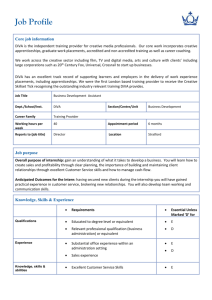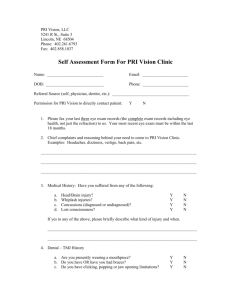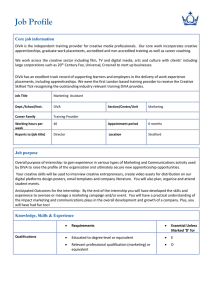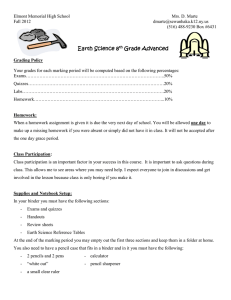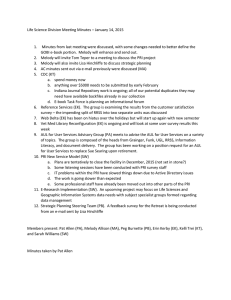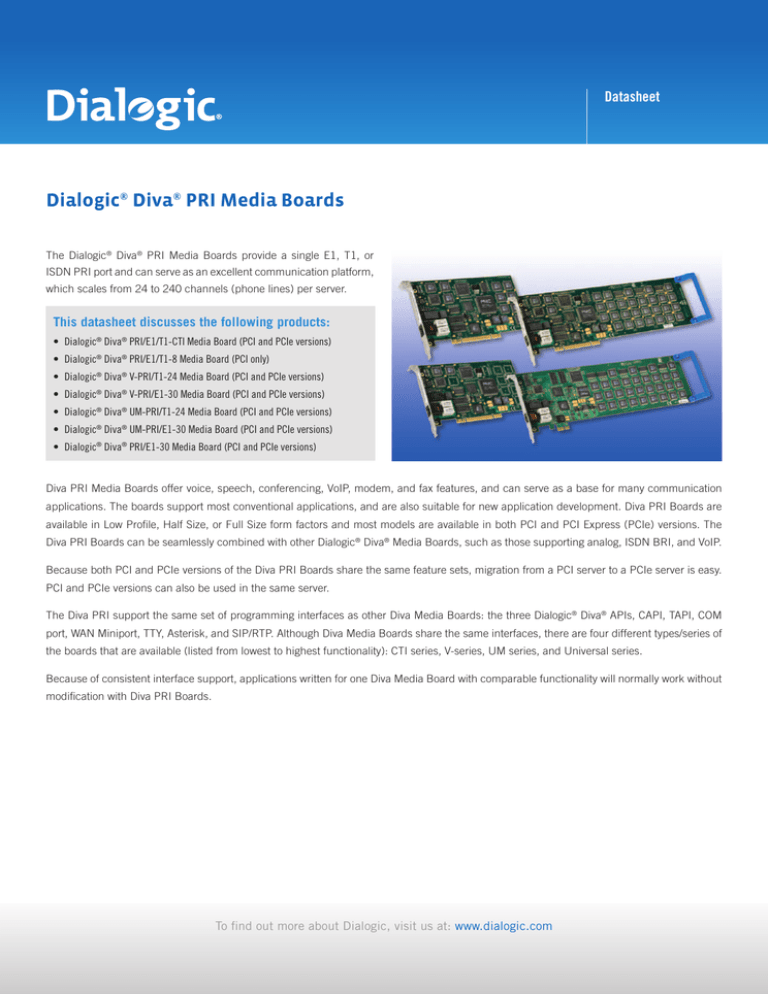
Datasheet
Dialogic® Diva® PRI Media Boards
The Dialogic® Diva® PRI Media Boards provide a single E1, T1, or
ISDN PRI port and can serve as an excellent communication platform,
which scales from 24 to 240 channels (phone lines) per server.
This datasheet discusses the following products:
• Dialogic® Diva® PRI/E1/T1-CTI Media Board (PCI and PCIe versions)
• Dialogic® Diva® PRI/E1/T1-8 Media Board (PCI only)
• Dialogic® Diva® V-PRI/T1-24 Media Board (PCI and PCIe versions)
• Dialogic® Diva® V-PRI/E1-30 Media Board (PCI and PCIe versions)
• Dialogic® Diva® UM-PRI/T1-24 Media Board (PCI and PCIe versions)
• Dialogic® Diva® UM-PRI/E1-30 Media Board (PCI and PCIe versions)
• Dialogic® Diva® PRI/E1-30 Media Board (PCI and PCIe versions)
Diva PRI Media Boards offer voice, speech, conferencing, VoIP, modem, and fax features, and can serve as a base for many communication
applications. The boards support most conventional applications, and are also suitable for new application development. Diva PRI Boards are
available in Low Profile, Half Size, or Full Size form factors and most models are available in both PCI and PCI Express (PCIe) versions. The
Diva PRI Boards can be seamlessly combined with other Dialogic® Diva® Media Boards, such as those supporting analog, ISDN BRI, and VoIP.
Because both PCI and PCIe versions of the Diva PRI Boards share the same feature sets, migration from a PCI server to a PCIe server is easy.
PCI and PCIe versions can also be used in the same server.
The Diva PRI support the same set of programming interfaces as other Diva Media Boards: the three Dialogic® Diva® APIs, CAPI, TAPI, COM
port, WAN Miniport, TTY, Asterisk, and SIP/RTP. Although Diva Media Boards share the same interfaces, there are four different types/series of
the boards that are available (listed from lowest to highest functionality): CTI series, V-series, UM series, and Universal series.
Because of consistent interface support, applications written for one Diva Media Board with comparable functionality will normally work without
modification with Diva PRI Boards.
To find out more about Dialogic, visit us at: www.dialogic.com
Dialogic® Diva® PRI Media Boards
Datasheet
Features
Benefits
Onboard CPU with large RAM and powerful FPGA chip for fast data
streaming between the host CPU, the DSPs, the phone line, and the
other active components onboard
Can remove performance bottlenecks by offloading key real-time
tasks that would ordinarily place an excessive burden on the host
server, allowing Quality of Service (for example, voice quality and
connection speed) to be more consistent
One powerful DSP dedicated to each communications channel on
the V-series, UM series, and PRI/E1-30 (applies to 8 channels on
PRI/E1/T1-8)
Provides real-time processing of complex operations (such as V.90
data modem, V.34 fax receiver and transmitter, voice compression,
or echo cancellation) without reducing overall system performance,
which lowers implementation costs
Sophisticated hardware design
Operates with low power consumption
Conforms to plug-and-play protocol
Permits easy installation and operation
Implements most supplementary services, many signaling
protocols, as well as all multinational ISDN protocols
Allows application compatibility with major PBXs and can make a
system based on Dialogic® Diva® technology ready for worldwide use
Voice packetization into Real-time Transport Protocol (RTP),
adaptive jitter buffer, voice compression (G.726, GSM), and
Comfort Noise Generation (CNG) on the V-series, UM series, and
PRI/E1-30 (applies to 8 channels on PRI/E1/T1-8)
Permits legacy voice, speech, and conferencing applications to be
used with VoIP clients and IP phones
Supports the same programming interfaces as other Dialogic ®
Diva® Media Boards, including CAPI, TAPI, Dialogic® Diva® APIs,
and others
Reduces porting efforts and time to market by making Diva
Media Boards compatible with most conventional telephony and
communications applications
Up to eight Diva Media Boards of the same or different types can
operate concurrently in a single server
Easy scalability and flexibility to address an organization’s
communications needs in changing environments, such as VoIP
Because the Diva PRI-CTI Boards do not have DSPs, they are unable to analyze or modify media such as voice. They have feature sets to
address the needs of basic voice applications (entry level IVR, call counting, call recording, telephone-voting, small conferencing, etc.).
The Diva V-PRI/E1-30 and Diva V-PRI/T1-24 do not support fax transmission, but offer voice features. They have a common feature set to
address the needs of high-end voice applications (IVR, contact center, large high-quality conferencing, predictive dialing, etc).
The Diva UM-PRI/E1-30 and Diva UM-PRI/T1-24 support fax transmissions on half (50%) of their available channels, offer voice features, and
modem connections up to V.90 speeds. They have a common feature set to address the needs of high-end Unified Messaging applications and,
in turn, the communication needs of an enterprise.
The Diva PRI/E1-30 supports V.34 fax transmission on all available channels and offers voice features and modem connections up to V.90
speeds. The Diva PRI/E1-30 provides the most sophisticated communications platform of all the Diva PRI Boards.
The Diva PRI/E1/T1-8 (PCI only) combines the functionality of Diva PRI/E1/T1-CTI and Diva PRI/E1-30. On eight channels it offers the feature
set of a Diva PRI/E1-30, and on its remaining channels offers the feature set of a PRI/E1/T1-CTI. The Diva PRI/E1/T1-8 has features that address
the needs of applications which require high performance on eight channels.
2
Dialogic® Diva® PRI Media Boards
Datasheet
Technical Specifications
Quick Reference
Voice resources
0 (-CTI), 8 (-8), 24 (V-, UM-PRI/T1-24), 30 (V-, UM-, PRI/E1-30)
Fax resources
0 (-CTI), 8 (-8), 12/15 (UM-PRI/T1-24 / E1-30), 30 (PRI/E1-30)
Conferencing resources
0 (-CTI), 8 (-8), 24 (V-, UM-PRI/T1-24), 30 (V-, UM-, PRI/E1-30)
Maximum boards/system
8 (tested by Dialogic); more than 8 are possible — depends on the application
CSP
Yes
Form factor
Low Profile: -CTI PCIe; Half Size: -CTI, -8 PCI; Full Size: V-, UM-PRI/T1-24 / V-, UM-, PRI/E1-30 PCI/PCIe
Resource bus
PCI rev 2.2 up to 66 MHz or PCI Express 1.0a x1 lane (3.3/12 V)
Connection
1 RJ-45 connector
Network interface
E1/T1 and ISDN PRI (Primary Rate Interface) in TE and NT Mode
Signaling
ETSI, NI-1, 4ESS, 5ESS, and all major ISDN protocols; QSI; and more
Operating system
Windows and Linux. Details at http://www.dialogic.com/systemreleases
Volts
PCI: 5; PCI Express: 3.3 and 12
Required accessories
1 shielded RJ-45/RJ-45 cable
Hardware
• 32-bit RISC CPU, 300 MHz
• 2 (0)*, 10 (8)*, 24 (23/24)* or 31 (30/31)* DSPs (32.76 MHz and 65 MIPS)
(*) The number in brackets indicates the number of available channels with DSP processing per board
• Onboard SDRAM Memory: 64 MB
• Telephony interface:
— 1 x RJ-45, no RJ-45/RJ-45 cable supplied
• Physical dimensions:
— PRI/E1/T1-CTI PCIe: 167.65 mm x 68.90 mm (PCB)
— PRI/E1/T1-CTI PCIe: 181.38 mm x 80.06 mm (with low profile bracket)
— PRI/E1/T1-CTI PCIe: 180.96 mm x 120.88 mm (with standard bracket)
— PRI/E1/T1-CTI PCI, PRI/E1/T1-8 PCI: 174.63 mm x 106.68 mm (PCB)
— PRI/E1/T1-CTI PCI, PRI/E1/T1-8 PCI: 187.84 mm x 126.37 mm (with bracket)
— V-, UM-, PRI/E1-30/ T1-24 PCI: 312.00 mm x 106.68 mm (PCB)
— V-, UM-, PRI/E1-30 / T1-24 PCIe: 312.00 mm x 111.15 mm (PCB)
— V-, UM-, PRI/E1-30 / T1-24 PCI/PCIe: 325.31 mm x 126.31 mm (with bracket)
— V-, UM-, PRI/E1-30 / T1-24 PCI/PCIe: 352.17 mm x 126.31 mm (with bracket and retainer)
• High-impedance mode for passive monitoring
• I/O addresses, memory, and interrupt allocated automatically
• Plug-and-play interface
• PCI: PCI 2.2, up to 66 MHz, 32 bit (also supports 64 bit dual address cycle DMA), 5 V supply required, 3.3 V, or 5 V universal signaling, supported in backwards
compatible PCI-X slots
• Production quality: ISO 9002
3
Dialogic® Diva® PRI Media Boards
Datasheet
Power Consumption and Environmental
• Power consumption:
— PRI/E1/T1-CTI PCI: 0.58A @ +5 V (typical)
— PRI/E1/T1-CTI PCIe: 0.96A @ +3.3 V and 0.04A @ 12 V (typical)
— PRI/E1/T1-8 PCI: 0.65A @ +5 V (typical)
— V-, UM-, PRI/E1-30 / T1-24 PCI: 0.97A @ +5 V (typical)
— V-, UM-, PRI/E1-30 / T1-24 PCIe: 2.3A @ +3.3 V and 0.03A @ 12 V (typical)
• Operating temperature: 10°C to 50°C
• Storage temperature: 0°C to 70°C
• Maximum tolerance in voltage fluctuation: According to the applicable PCI or PCI Express specification
Dialogic® Diva® System Release Software, Dialogic® Diva® SDK Software and Dialogic® Diva® SIPcontrol™ Software
• Supported operating systems: Windows and Linux. Details at http://www.dialogic.com/systemreleases
• M-adapter feature (Dialogic patented technology): Combined Virtual Adapter, Internal Call Transfer,Explicit Call
Transfer Emulation
• SNMP support:
— Windows: v2c
— Linux: Net-SNMP v1, v2c and v3
• Application interfaces (provided by Diva System Release Software and Diva SDK):
— Microsoft: Diva API, Diva API for .NET, Diva Component API (VB.NET), COM Port, WAN Miniport, TAPI, CAPI 2.0, extended CAPI, VoIP (SIP/RTP)
— Linux: Diva API, TTY, CAPI 2.0, extended CAPI, VoIP (SIP/RTP)
• Diva SIPcontrol Software: VoIP and FoIP (T.38) Gateway Software. For up to 2 channels per system, the licenses are free of charge. If more than 2 channels are
required, licenses can be ordered from Dialogic. Diva SIPcontrol Software can be downloaded from http://www.dialogic.com.
Features – Signaling
• DSS1 (Euro-ISDN), NI-1 (North America National ISDN 1), 5ESS (North America), 1TR6 (Germany), INS Net 64 (Japan), VN3 (France), CT1 (Belgium), QSIG
• Call progress analysis:
— Busy tone detection
— Ring back tone detection
— Special Information Tone (SIT) detection
— Fax/modem detection
— Dial tone detection
• ISDN supplementary services:
— Number identification services (CLIP, CLIR, COLP, COLR, KEY, MSN, DDI, SUB)
— Call offering services (TP, CFU, CFB, CFNR)
— Call completion services (CW, HOLD, ECT)
— Charging services (AoC)
— Three-party conference
— Large conference
4
Dialogic® Diva® PRI Media Boards
Datasheet
Features – Media Processing
NOTE: Not for Dialogic® Diva® PRI/E1/T1-CTI Media Board, only on 8 channels for the Dialogic® Diva® PRI/E1/T1-8 Media Board
• Voice and speech:
— G.711 coding (A-law, µ-law selectable)
— DTMF detection, generation, clamping, and filtering
— Generic tone detection and generation
— Pulse tone detection
— Full-duplex voice, barge-in
— Voice Activity Detection (VAD)
— Silence detection
— Human talker detection
— Recording Automatic Gain Control (AGC)
— Pitch control
— Audio tap
— G.168 echo cancellation, up to 128 ms tail length
• Voice over IP (VoIP):
— G.711 voice coder (64 kbps, µ-law, A-law)
— G.726 voice coder (32 kbps)
— G.729 voice coder (VoIP licenses required)
— GSM voice coder (13 kbps)
— Adaptive jitter buffer — Voice Activity Detection (VAD)
— Comfort Noise Generation (CNG)
— Real-time Transport Protocol (RTP) framing
— G.168 echo cancellation, up to 128 ms tail length
• Switching and conferencing:
— Onboard and cross-board switching and (large) conferencing via line interconnect (call tromboning)
— Automatic Gain Control (AGC)
• Support for Fax class 1 and 2 (UM- and Universal-Series only)
• Support for Fax Group 3, T.30 (UM- and Universal-Series only):
— V.17, V.29, V.27ter, V.21, V.34 modulation — Fax polling/ fax on demand
— Up to 33.6 kbps with each channel (send and receive)
— Page formats: ISO A4, B4, A3
— Fax compression MH, MR, MMR — Error Correction Mode (ECM)
— Standard, fine, super-fine and ultra-fine resolution
— Color fax (JPEG-format)
5
Dialogic® Diva® PRI Media Boards
Datasheet
• Support for FoIP, T.38, when using Diva SIPcontrol Software (UM- and Universal-Series only):
— Up to 33.6 kbps with each channel (send and receive)
• Data modem (Remote Access, POS and other Low Bit Rate (LBR) applications) (UM- and Universal-Series only):
— V.21, V.22, V.22bis, Bell 103, Bell 212A, V.32, V.32bis, V.34, V.42, V.42bis, V.90, MNP4, MNP5
— Modem with extension: V.18, V.21, Bell 103, V.23, EDT, Baudot45/47/50 incl. DTMF, V.42, V.42bis
— B-channel protocols: Transparent HDLC, Transparent Voice, Synchronous PPP and MLPPP, X.75 (LAPB), X.75/V.42bis, LAPD, T.90NL, T.70NL, X.25, X.31, Rate adaption (56 kbps), PIAFS 1.0 / 2.0, SDLC
Safety and EMC
Canada: ICES-003 Class B, CSA 60950-1
Europe: EN60950-1, EN55022, EN55024
United States: FCC Part 15 Class B, UL60950-1
Telecommunications
United States: TIA-968
Canada: CS03
Approvals, Compliance, and Warranty
Hazardous substances: RoHS compliance information at http://www.dialogic.com/rohs
Country-specific approvals: Global product approvals at http://www.dialogic.com/declarations
Warranty: Warranty information at http://www.dialogic.com/warranties
6
Dialogic® Diva® PRI Media Boards
Datasheet
Ordering Information
Dialogic® Diva® PRI Media Boards and Related Products/Items
Order Code
PRI/E1/T1-CTI PCI
306-211
PRI/E1/T1-CTI PCI North America
306-212
PRI/E1/T1-CTI PCI China
306-244
PRI/E1/T1-CTI PCI Australia
306-228
PRI/E1/T1-CTI PCI Japan
306-278
PRI/E1/T1-CTI PCIe (with additional LP bracket)
306-320
PRI/E1/T1-8 PCI
306-206
PRI/E1/T1-8 PCI Australia
306-227
V-PRI/T1-24 PCI North America
306-213
V-PRI/T1-24 PCIe North America
306-316
V-PRI/T1-24 PCIe Japan
306-327
UM-PRI/T1-24 PCI North America
306-391
UM-PRI/T1-24 PCIe North America
306-392
V-PRI/E1-30 PCI
306-214
V-PRI/E1-30 PCI China
306-265
V-PRI/E1-30 PCI Australia
306-215
V-PRI/E1-30 PCI New Zealand
306-270
V-PRI/E1-30 PCIe
306-315
UM-PRI/E1-30 PCI
306-393
UM-PRI/E1-30 PCIe
306-394
PRI/E1-30 PCI
306-209
PRI/E1-30 PCI China
306-243
PRI/E1-30 PCI Australia
306-210
PRI/E1-30 PCI New Zealand
306-269
PRI/E1-30 PCIe
306-304
Diva G.729 24 CH SW license*
G04-029
Diva G.729 30 CH SW license*
G05-029
* To be used when VoIP applications like Diva SIPcontrol Software need to support the G.729 coder.
7
www.dialogic.com
Dialogic Inc
1504 McCarthy Boulevard
Milpitas, California 95035-7405
USA
Dialogic, Diva and SIPcontrol are either registered trademarks or trademarks of Dialogic Inc. and its affiliates or subsidiaries (“Dialogic”). Dialogic’s trademarks may be used publicly only with permission
from Dialogic. Such permission may only be granted by Dialogic’s legal department at Dialogic Inc., 9800 Cavendish Blvd., Suite 500, Montreal, Quebec, CANADA H4M 2V9.
The names of actual companies and products mentioned herein are the trademarks of their respective owners.
Dialogic encourages all users of its products to procure all necessary intellectual property licenses required to implement their concepts or applications, which licenses may vary from country to country.
None of the information provided in this Datasheet other than what is listed under the section entitled Technical Specifications forms part of the specifications of the product and any benefits specified
are not guaranteed. No licenses or warranties of any kind are provided under this product brief.
Dialogic may make changes to specifications, product descriptions, and plans at any time, without notice.
Any use case(s) shown and/or described herein represent one or more examples of the various ways, scenarios or environments in which Dialogic® products can be used. Such use case(s) are non-limiting
and do not represent recommendations of Dialogic as to whether or how to use Dialogic products.
Copyright © 2012 Dialogic Inc.
All rights reserved.
12/12 11233-02

